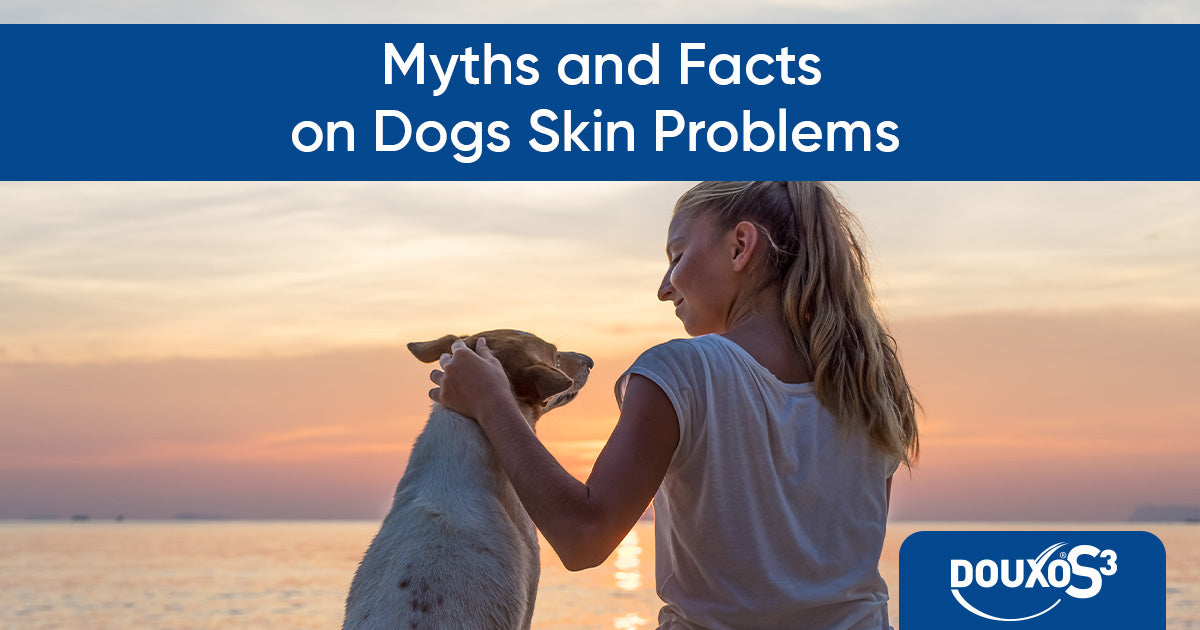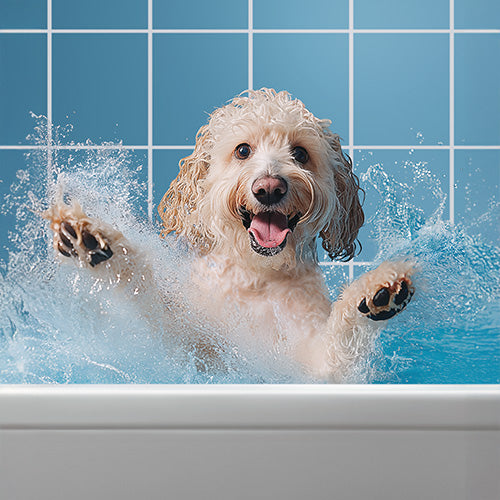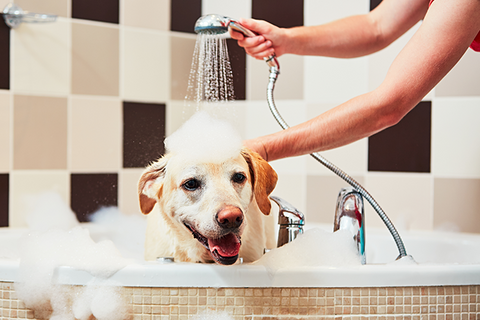
Myths and facts on dogs’ skin problems
Skin problems are a common reason for taking your dog to see your vet. Not only can skin issues be very irritating for your pet but some conditions, such as allergies, are lifelong and require ongoing treatment. When learning how to care for your dog’s skin you will receive plenty of well-intended advice from friends, family and other dog owners. However, you need to be able to distinguish the truth from common myths. Ultimately, you should trust your vet's advice when deciding how best to care for your dog’s skin.
The truth behind common myths
When you speak to other dog owners or search the internet for information on the best way to care for your dog’s skin, everyone will have their own opinions on how this should be done. However, not everything you read or hear is true, so alongside discovering useful facts you may also come across incorrect information that could be detrimental to the health of your dog.
Myth 1 – It is not necessary to bath your dog
Most dogs, unless otherwise advised by your vet, will benefit from being bathed from time to time, especially if they like to swim or get muddy on walks. Even intermittent bathing, with a gentle DOUXO® S3 CALM shampoo will help to keep your dog’s hair and skin clean and prevent any irritation from developing. If your dog is not keen on being bathed, then the DOUXO® S3 CALM range also offers a convenient leave-on mousse and cleaning pads. These products can increase the interval between baths by keeping the skin clean and healthy.
Dogs with a long-term skin condition that makes them itchy and prone to skin infections may benefit from more regular baths with a soothing shampoo such as DOUXO® S3 PYO. This shampoo disinfects the skin and helps maintain a healthy skin barrier, in moments when there is a flare and infections become an issue, it will help to keeping the skin healthy.
Myth 2 – Steroids are dangerous
Steroids can be very useful for treating skin disease as they act quickly to reduce any itching, inflammation and pain. However, using steroids can cause side effects, including increased drinking, eating and urinating, though these side effects can be minimised by following the guidance from your vet and attending regular check-ups.
There are several different forms of steroids including tablets, injections, creams and sprays, which can only be prescribed by your vet. Topical steroid treatments, such as creams and sprays are frequently prescribed, as they are applied directly to the area of affected skin, reducing the severity of any side effects while effectively treating the skin lesions. Your vet will thoroughly check your dog before prescribing steroid treatment, so you can discuss any concerns you may have about using steroids with your vet before starting treatment.
Myth 3 – ‘That looks just like the skin problem my dog had but my dog responded to treatment, so why has your dog not?’
This is a sentence you can listen from a well-intentioned friend or relative. However, one of the difficulties when dealing with skin disease is they can be very much alike externally, while having a very different origin, treatment, and outcome! There are hundreds of different skin disease, from simple parasites and allergies to complicated systemic illnesses. This causes other people to jump to conclusions about your pet’s diagnosis, especially if their dog has suffered from a “similar” condition.
The time it takes your dog’s skin to respond to treatment depends on the cause, so not every dog will recover from skin disease rapidly. If you are concerned about how quickly your dog’s skin lesions are healing, you should speak to your vet, who can reassess your dog and adjust their treatment plan if needed.
Facts about canine skin
The skin is your dog’s first line of defense against the outside world, and it is responsible for protecting the body against physical harm. The skin also helps prevent infections, regulates your dog’s temperature and keeps them hydrated, while also providing vital sensory information about your pet’s surroundings. To be able to perform these roles the skin needs to be kept in good health.
Fact 1-The condition of the skin is a good marker for your pet’s overall health
As the largest organ of the body, the health of your pet’s skin is an important indicator of your pet’s general health. When the skin barrier breaks down, this makes your dog vulnerable to infections, as well as preventing the skin from being able to function properly. Skin problems are often the first sign your dog is suffering from an underlying illness, so it is important you always get any skin lesions examined by your vet to ensure any underlying diseases are diagnosed early.
Fact 2- Canine skin is unique
Compared to our skin, your dog’s skin has several differences that you need to be aware of.
- Most dogs have hair covering their skin, which acts as the first barrier of protection, but also traps dirt, parasites and fungus.
- Dogs cannot sweat in the same way as people do, so sweating is not relied on as a cooling mechanism. Instead, dogs have other ways of cooling down, such as panting.
- The pH of your dog’s skin is different from our skin, as dogs have more alkaline skin (pH 5.5 to 7.2) compared to us. This makes it necessary to provide a slightly acidic skin care as in the DOUXO® S3 range products, to help maintain a balance in the cutaneous ecosystem. This balance is more easily broken when pH raises.
Fact 3-Human products are not suitable for use on our dogs
Human skin care products such as shampoo and conditioner are specifically designed for use on our skin. As commented above, dogs have a different skin pH compared to us, so using human products on their skin may break down the skin barrier and cause irritation. Pets may also try to lick off any products we use on their skin, and human products may contain toxic or irritating substances that may harm our dogs if they ingest them. This means to keep our dogs healthy we should only use products designed for canine use.
If your dog suffers from dandruff or oily skin, then DOUXO® S3 SEB offers a gentle shampoo and an easy to pally and convenient mousse that will improve the health of your dog’s skin and treat any smells or odours. The DOUXO® S3 range is specifically formulated for use in dogs and can be used long-term to keep their skin healthy. Having one of the DOUXO® S3 shampoos to hand will prevent the temptation of using a human product on your dog, while also providing you with the knowledge that you are caring for your dog’s skin in the best way possible.
If your dog has been diagnosed with skin disease, you will quickly discover that everyone has an opinion on how you should care for your dog’s skin. While some of this information may be useful, other advice may be detrimental to your dog’s health. To ensure your dog gets the best treatment, so their skin can be kept in the best possible health, it is important you trust your vet and tell them of any concerns you have about your pet’s skin.
















